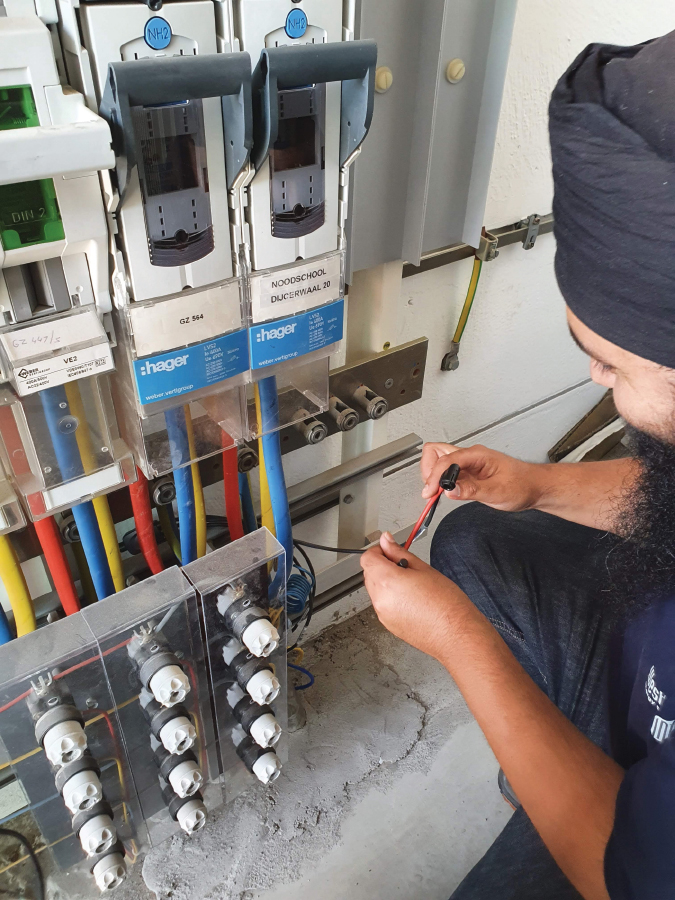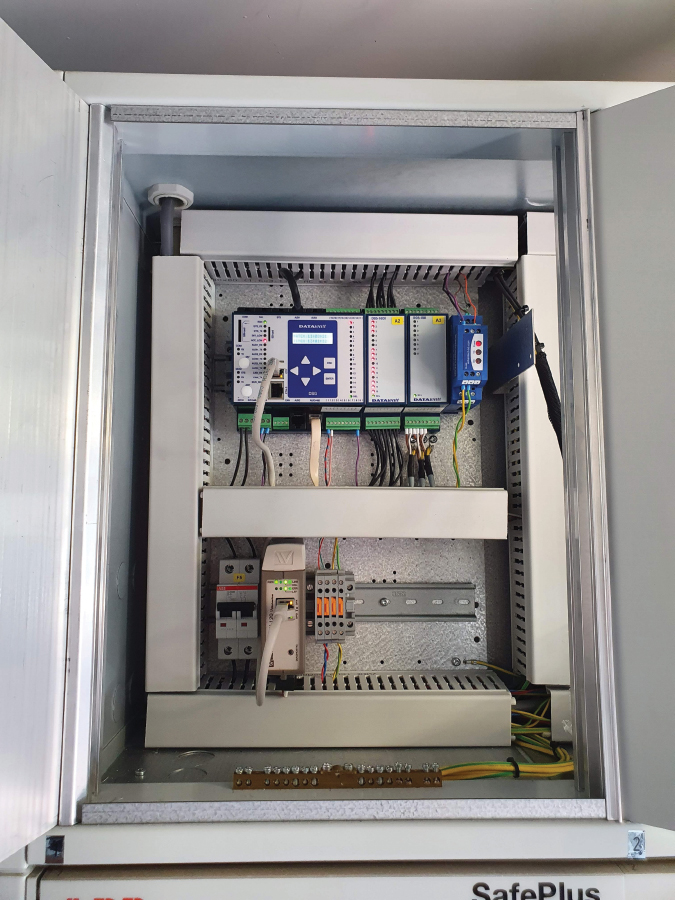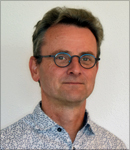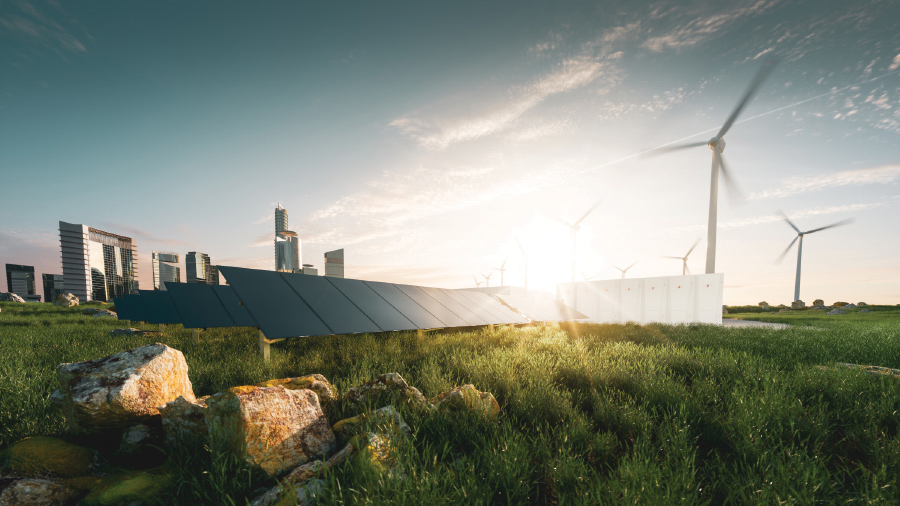"While God created the Earth, the Dutch created the Netherlands,” goes the old saying — referring to how the country’s first settlers from around 400 BCE built the country from earth mounds and dikes to hold back the waters of the North Sea. Now, the country is building a smart grid infrastructure to move away from traditional energy sources to renewables. To overcome the challenges of monitoring these medium-voltage renewable energy sources, Juva, an energy network management company turned to remote telemetry as a solution.
Transitioning to a low-carbon energy system is now the primary focus of Dutch energy policy, according to the International Energy Agency. The Netherlands’ 2019 Climate Act has set legally binding targets to reduce greenhouse gas (GHG) emissions by 2050. First, to reduce emissions to 95%, compared with 1990’s levels and, second, for 100% of electricity to come from renewables by that year.
As reported by Reuters, the country also faces pressure to bring its end date forward to 2030 following COP26. Wind, wave, marine, hydro, biomass and solar are all proving themselves as viable alternative energy sources — but finding the right control technology to monitor these sources effectively presents a challenge for smart grid operators.

Finding the right control technology for renewable energy sources is a challenge for smart grid operators. Source: Ovarro
Effectively managing assets on a smart grid is only achievable through the capture, storage and interpretation of vast amounts of data from physical assets. However, renewable energy sources like solar rely on low- or medium-voltages, and monitoring these can be more challenging. Renewable sources are unpredictable. For instance, because the sun shines at certain times, solar panels feed energy back into the grid periodically which can lead to potential instabilities and disruptions in the grid. What’s more, conventional remote monitoring systems — aside from being expensive — can be ill-suited to the task of properly interpreting the fluctuating performance data.
These were the challenges faced by energy management company Juva with the grid operator Westland Infra on distribution automation. Together, they manage a smart grid covering an area of 25 to 30 square kilometres in Westland, the Netherlands, which involves monitoring around 250 substations in the region. Juva sought a better solution for remote monitoring and managing low- and medium-voltages on the grid.
This need was getting bigger as more and more Dutch homes turned to renewable energy sources, like solar panels. Whereas photovoltaic systems accounted for just 0.05%, or 56 gigawatt hours (GWh), of the Netherlands’ total energy consumption 10 years ago, this figure had risen to 6.79%, or 8,144 GWh by 2020.
Outside the box
“We needed a flexible, customisable solution to handle the requirements typical of low- or medium-voltage networks,” says Roel van de Konijnenburg, operations technology specialist at Juva. “We found that monitoring and control technology platforms from other suppliers tend to focus on a standard template.”
Juva was facing limitations with its existing systems. Changes to drives and operating systems were time-consuming and could be difficult to implement. Instead, Juva wanted a solution that would go beyond the normal boundaries — that was secure, cost-effective and could handle the unpredictable behaviours of renewable energy sources.
To find this, Juva turned to a trusted partner that could supply, configure and implement medium-voltage network telemetry systems for grid operations. The companies had worked together on all kinds of projects including for the monitoring and controlling of protection relays, energy meters and remote switching of medium-voltage fields. Juva required that the partner be flexible with implementation and easier to work with as a result.
A consistent supply
To investigate how to implement a consistent medium-voltage energy supply across the smart grid, it was necessary to examine some of the key challenges. That included issues relating to the three-phase grid, which is the world’s most common and economical way of alternating current power generation, transmission and distribution across a network.

Remote telemetry units (RTUs) designed to offer flexibility and maximum security for the water, energy and industrial markets. Source: Ovarro
Juva recognised that low-voltage solar panels of various households in a neighbourhood were not equally distributed over the three-phase grid. In another instance, a wire in the cable was overloaded due to the high level of sunlight. Consequently, the grid operator needed a solution with flexibility to detect these unique instances. Existing hardware also made it difficult to detect instances of illegal energy use. In short, technology was needed that would help Juva manage its grid productivity, energy efficiency and security with higher levels of quality of service (QoS).
Next, a third company was brought into the project with expertise in specially designed smart sensor networks, data analytics and unique collaborative software to better analyse and control data on grids.
A solution was devised with Rogowski coils. Rogowski coils are commonly used to accurately monitor medium-and low-voltages in precision welding systems, arc melting furnaces, short-circuit testing of electric generators and as sensors in protection systems of electrical plants. The installation time was reduced to less than 30 minutes to measure eight fields, and the purchase price was also much cheaper than conventional solutions.
Aside from the Rogowski coils, remote telemetry unit (RTU) systems were needed for the capture, storage and interpretation of vast amounts of data from physical assets in the network. RTUs are now a critical part of most power generation and distribution operations, and are essential for smart grids today and in the future. They are used in a range of water, energy and industrial applications with two main design principles: flexibility and maximum security.
Flexibility and security
Flexible characteristics of the RTUs include their ability to implement a variety of protocols in real-time including IEC104, COAP and Modbus, with other protocols available on request. New protocols can be created easily through the Linux operating platform and C# programming language, while programmable logic controller (PLC) programs can also be made with the latest standard from Codesys based on IEC61131-3 — this standard is the industrial protocol for control programs and is used by many national and international organisations and companies.
The RTUs greatly benefit the overall security of the network, adds Konijnenburg: “The hardware and software of the RTU is a definite improvement. You can connect multiple networks in a station — one port is used for communications upwards and another for substation communications. We use a lot of firewall functions to protect these many inputs/outputs (I/Os). The security options aren’t limitless, but there are many.”
Remote telemetry systems like these will prove vital as more homes and businesses in the Netherlands turn to low- and medium-voltage renewable energy sources, and as Juva expands its smart grid and the number of substations beyond the 250 it monitors currently. Just as the Dutch created the Netherlands all those years ago, the country is now on its way to creating a fully sustainable energy grid by 2050 — if not sooner.
 Ronald Robbertsen is a project engineer at Ovarro, where he has dedicated over 33 years to the company. He studied technical iInformation at HBO University and is based in the Netherlands. Robbertsen’s extensive experience and technical expertise has been instrumental in advancing Ovarro’s engineering projects.
Ronald Robbertsen is a project engineer at Ovarro, where he has dedicated over 33 years to the company. He studied technical iInformation at HBO University and is based in the Netherlands. Robbertsen’s extensive experience and technical expertise has been instrumental in advancing Ovarro’s engineering projects.








